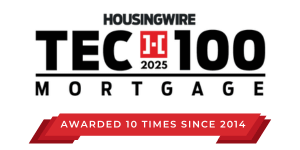As we approach the end of 2025, the process is familiar: several activities to close the books, finalize compliance reports, and summarize the year’s performance. For many, this is a backward-looking process. However, the most successful real estate lenders know this moment isn’t just about looking in the rear-view mirror; it’s the single most important opportunity to prepare for the year ahead.
A review based on last year’s assumptions is insufficient preparation for the market to come. The economic landscape of 2025 provided a live, real-world stress test on housing assets. It’s time to reframe the year-end review. Stop viewing it as a 2025 report card and start treating it as a detailed analysis of your portfolio’s performance under real-world pressures to assess its health for 2026.
The Real-World Stress Factors of 2025
Stress tests can be helpful, but today’s market has already shown us the real pressure points. A thoughtful portfolio analysis should look closely at exposure to those known risks:
- Market Fragmentation: The primary stressor in 2025 was not a national decline, but a sharp split in performance across local markets [1]. A portfolio heavily concentrated in Metropolitan Statistical Areas (MSAs) that have cooled are already feeling the strain. This kind of geographic fragmentation puts the spotlight on how well institutions can manage concentrated risks that don’t show up in national averages.
- Climate and Insurance Volatility: A growing stress factor is the financial impact of climate events on collateral. Beyond direct damages, rising insurance premiums and decreased insurability in certain regions [2] apply direct pressure on borrower finances and long-term property values. This tests a portfolio’s resilience against a new class of non-market risks.
- Interest Rate Sensitivity: Even if rates stabilize, loan performance and borrower demand are still highly rate-dependent.
- Regulatory Shifts: Compliance changes (such as AVM testing standards, ROV requirements, or capital reserve rules) can directly affect portfolio flexibility.
What Your Loan Portfolio is Really Telling You
Applying real-world stress factors to your portfolio means going deeper than broad summaries; it requires a close, asset-level look. This kind of analysis gives you the insight needed for the year ahead and highlights two key outcomes:
- Pockets of Resilience (Green Signals): Which properties not only held their value but gained ground despite market pressure? These aren’t just 2025 outliers, they highlight areas of real market strength and point to where lenders can confidently direct origination and marketing resources in 2026.
- Latent Risk (Vulnerabilities): Where is your portfolio heavily concentrated in markets that have cooled down or are exposed to climate-related economic pressure? This data gives your risk and servicing teams a clear watchlist, helping you shift from reacting to issues after they surface to proactively managing risk in 2026.
- Capital Efficiency (Strategic Flexibility): Is your capital tied up in underperforming assets, or is it positioned to take advantage of new opportunities? An accurate, portfolio-wide mark-to-market is essential for optimizing your balance sheet and making smarter decisions in the secondary market.
The Technology for an Effective Analysis
You cannot conduct a meaningful stress test with outdated or incomplete data and property values. This level of analysis has historically been too slow and costly to be practical, often involving a patchwork of old data and expensive one-off valuations. A strategic analysis requires a fresh, comprehensive, and accurate view of every asset in the portfolio.
This is precisely the challenge VeroVALUE Portfolio was built to solve. It is not a software platform you need to learn, but a high-speed, batch valuation and data enrichment service. The process is simple: you provide your list of properties, and our diagnostic engine performs a comprehensive analysis, returning a detailed, asset-level report on your entire portfolio in as little as a few hours.
VeroVALUE Portfolio transforms a burdensome compliance task into a powerful, repeatable strategic exercise. Powered by one of the industry’s most trusted Automated Valuation Models (AVMs), it delivers the speed, scale, and accuracy you need to:
- Confidently Identify Risk: Get an objective, asset-level view of your portfolio’s vulnerabilities. We append critical data points to each property record, pinpointing geographic concentrations with fresh market values and flagging assets exposed to climate-related risks, such as properties located within Federal Emergency Management Agency (FEMA)-designated disaster zones.
- Precisely Target Opportunity: Stop guessing where the next growth market will be. By running the entire portfolio through the same trusted valuation model, you can identify true pockets of resilience and appreciation, guiding your origination and marketing teams with hard data instead of assumptions.
- Optimize Your Strategy: Armed with a complete, mark-to-market view of your assets, your leadership team can make smarter, data-driven decisions on everything from servicing strategies and loss reserves to Mortgage Servicing Right (MSR) valuation and capital allocation.
From Analysis to Empowering Team Action
The true value of a portfolio-wide analysis lies not just in identifying risks and opportunities, but in how it empowers specific teams to make smarter, more decisive moves. With a clear, data-driven picture of every asset, you can:
- For Origination and Marketing Teams: Move beyond guesswork. Instead of casting a wide net, you can confidently reallocate marketing spend and sales resources to the specific MSAs and neighborhoods demonstrating true resilience, maximizing your return on stubbornly high acquisition costs.
- For Servicing and Risk Management: Create a proactive watchlist. Your teams can preemptively engage borrowers in high-risk areas, whether due to market cooling or climate/insurance pressures, with loss mitigation options before delinquency occurs, protecting both the borrower and your balance sheet.
- For Capital Markets and Executive Leadership: Sharpen your financial strategy. The data provides a defensible, mark-to-market basis for MSR valuations, informs loss reserve calculations, and highlights prime opportunities for buying or selling assets in the secondary market.
From Test Results to a More Resilient 2026 Strategy
Year-end is a natural turning point. A stress test is not just about spotting weaknesses; it is about using those insights to build a stronger and more resilient institution. The results of this analysis provide a clear plan to reinforce vulnerable areas and build on proven strengths.
Origination costs remain stubbornly high [3], which makes this level of precision a competitive necessity rather than a nice-to-have.
To learn how VeroVALUE Portfolio can help you analyze your portfolio and build a more resilient strategy for 2026, contact us today.
Sources: As of September 17, 2025.
[1] National Association of REALTORS®: “Housing Market Data,” (https://www.nar.realtor/research-and-statistics/housing-statistics)
[2] NOAA National Centers for Environmental Information: “Billion-Dollar Weather and Climate Disasters,” (https://www.ncei.noaa.gov/access/billions/)
[3] Mortgage Bankers Association: “Mortgage Bankers Performance Report,” (https://www.mba.org/news-research-and-resources/research-and-economics/single-family-research/mortgage-bankers-performance-report-series




